Fall 2020
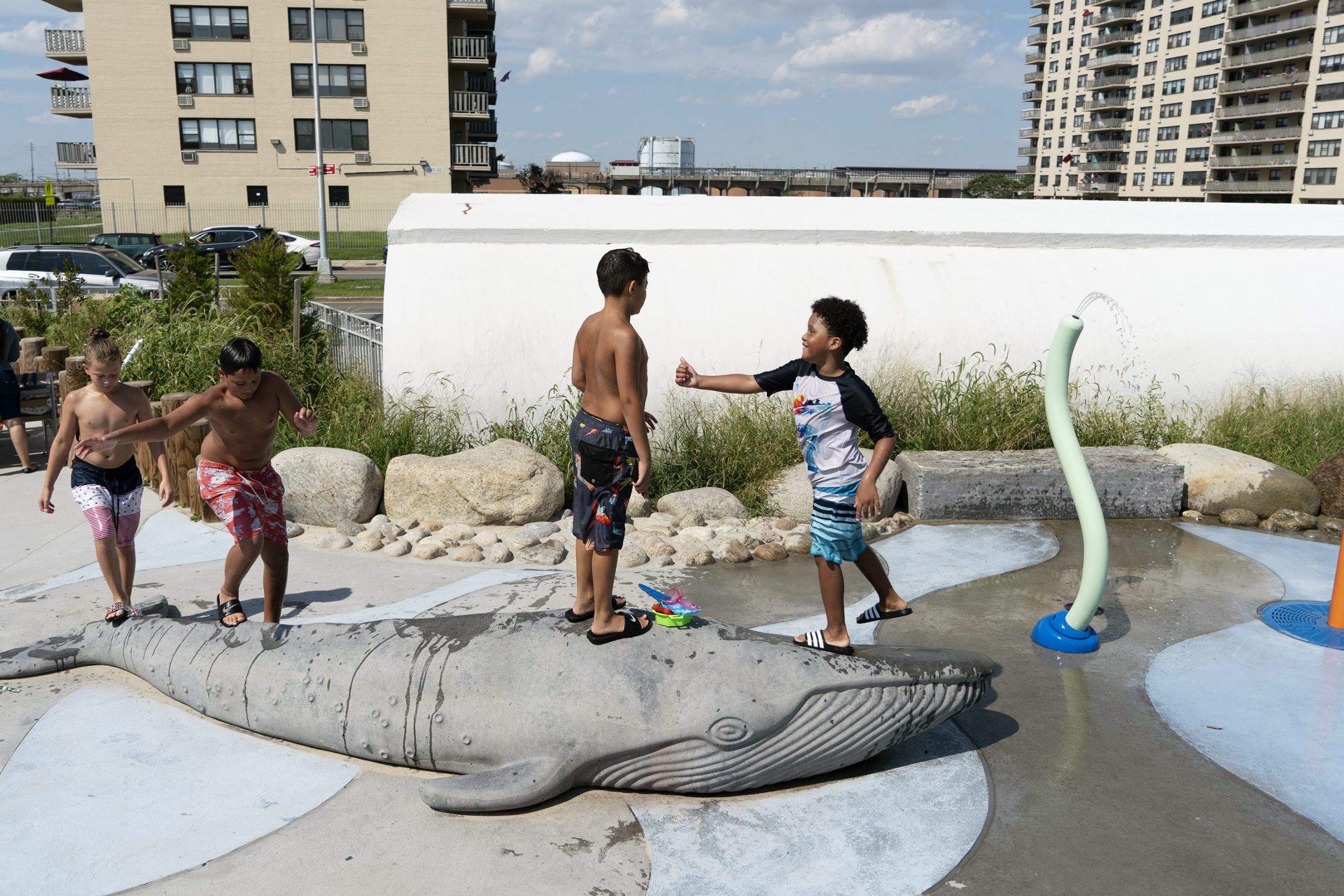
It starts and ends with a whale. Thirty years ago, Quennell Rothschild and Partners was selected to completely overhaul the Central Park Children’s Zoo. The theme park-like site was chock-a-block with storybook structures and anthropomorphized animal sculptures, including a large, cheerful whale that was beloved by many. But new standards for animal well-being dictated a paradigm shift in zoological practices towards animal welfare, naturalism, and education. In our new immersion-based zoo plan, animals seemingly roamed free in naturalistic environments and didactic opportunities were celebrated. The former storybook features and cartoony animal sculptures were out — but the whale found a new home in the Rockaways.
Thirty years later, our concept for a tidal-pool themed discovery and educational play area for the Sandpiper Playground in Rockaway Beach not only won us the job but brought us face to face with the ghost of an old friend — the Central Park Children’s Zoo whale. Bedazzled and renamed by her Rockaway family rescuers, “Whaleamina,” the unofficial local mascot, graced the terminus of Rockaway Beach’s main boulevard for nearly 20 years until her final return to the sea via Hurricane Sandy in 2012.
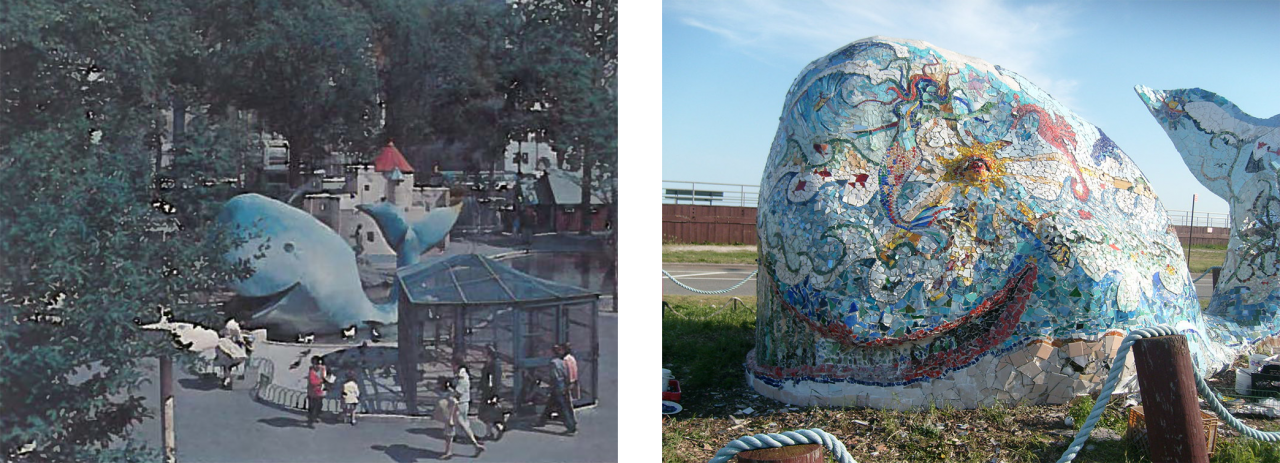
Research
We began this project in the usual way: with research. We identified various sea life common to the area’s ecosystem that could be incorporated into the playground design as fun and educational components of the project, including lobster, squid, sea horses, and sandpipers. When the project unexpectedly received additional funding for a signature sea creature sculpture, it allowed us to expand upon our theme — and knowing the importance of the loved and lost “Whaleamina,” we quickly proposed that a whale become our project’s centerpiece.
To sell the idea to our clients at NYC Parks we set out to create a rendering that would illustrate the tide pool and whale concept. However, after a thorough search for a precedent image that would communicate the right species, positioning, and feeling of the whale was unsuccessful, Partner Alison Shipley wondered whether we could make a model of a whale ourselves the way we wanted it to appear and photograph it for the use of our rendering. Already invested in the project, our Director of Business and Marketing, Suki Choe, stepped up to the task. Tapping into her BFA experience from Washington University in St. Louis and passion for the systems, processes, forms, and textures of the natural world, Suki became our in-house artist. Not only did she create small-scale models to act as the inspiration for the rendering but with the support of our office and approval of NYC Parks, Suki’s meticulously designed clay models became the blueprint for Sandpiper’s central whale sculpture.
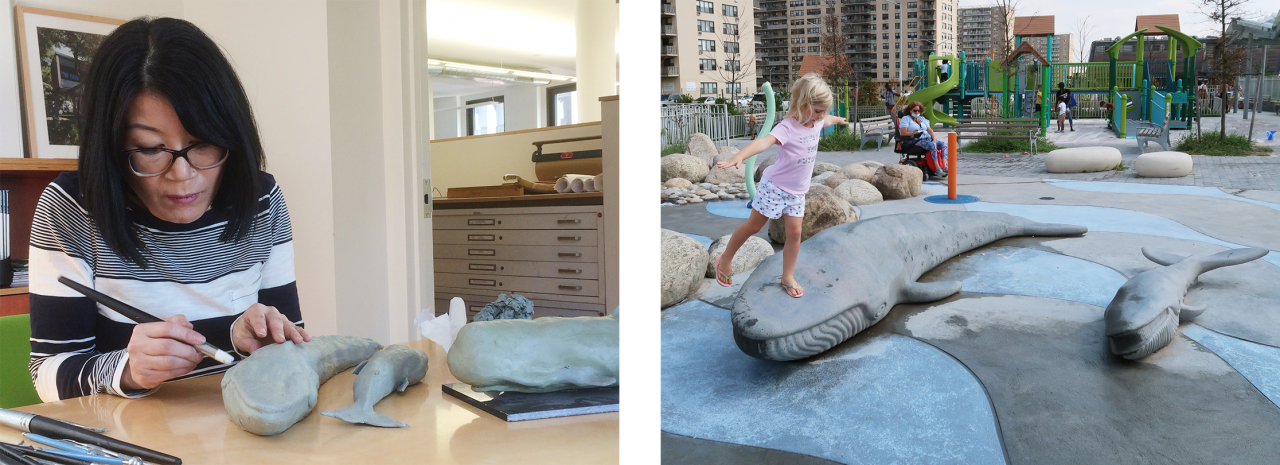
Design
Due to its anatomical configuration, the initial selection of a dramatic Sperm Whale for our sculpture subject fell victim to the height restriction of 3 feet above grade in the play area. Suki eventually settled on the better-proportioned Blue Whale, whose physical form would allow for detailed features such as the mouth, eyes and baleen, the vertical fringed plates that hang from the whale’s upper jaw, to be seen above the playground surface. Suki familiarized herself with blue whale musculature by watching countless videos of them swimming in their habitat, allowing her to create a much more nuanced and realistic form of the body. Then one whale turned into three. Multiple whales would represent how they often travel, and increase the fun-factor by offering more climbing opportunities for different groups of children at one time. Suki’s final design included two adults and baby whale that appear like a friendly family group that encourages interaction with playground visitors.
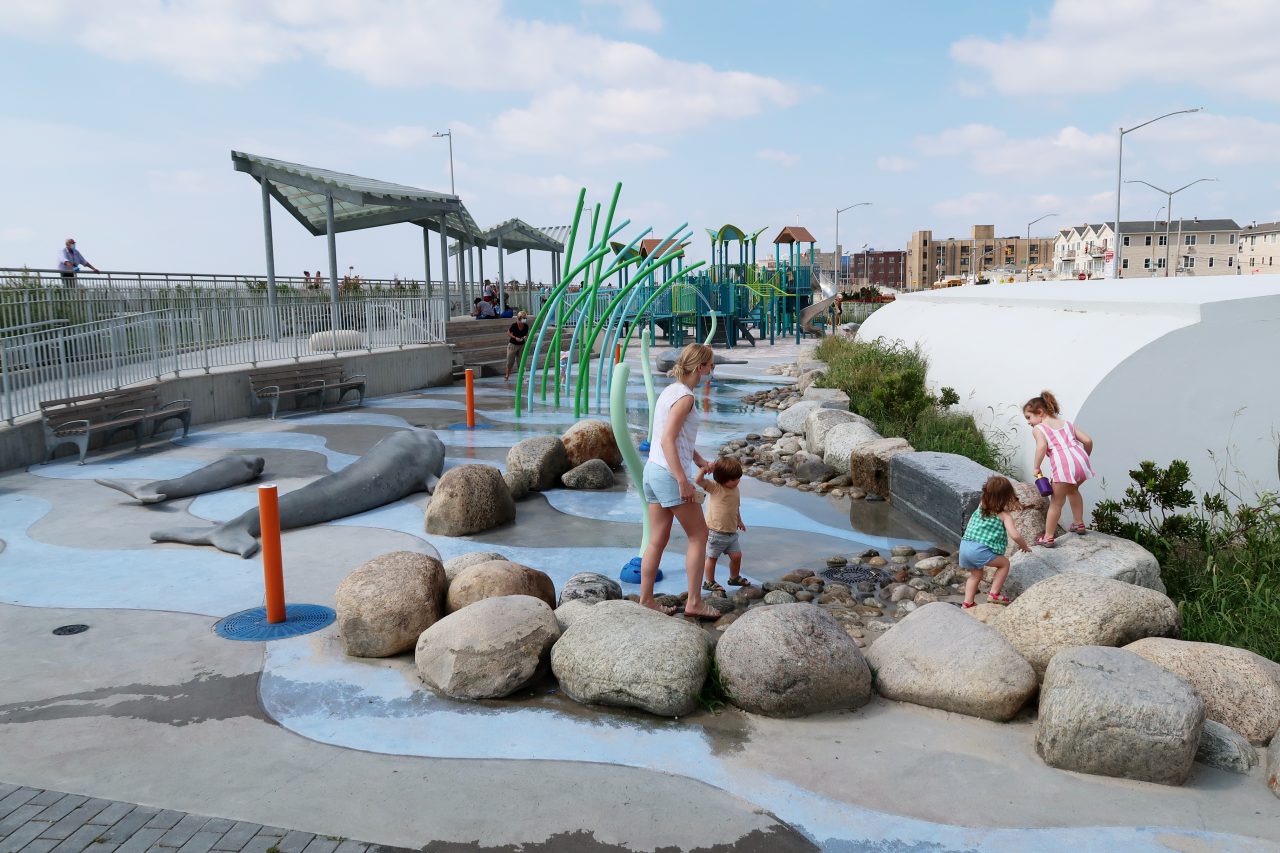
Manufacture
Being more familiar with other sculpting materials and methods, there was a steep learning curve working with plasticine clay. Suki found that the material made the fine detailing of the eyes, baleen and barnacles difficult to cleanly execute. She worried that the irregularities at the small scale would become exaggerated when the model was enlarged to form the cast for the final concrete sculpture and that an imperfect edge at that smaller scale could pose a danger to users once enlarged. In fact, the texture of both the smooth surfaces and raised detailed areas would be critical to providing a safe, visually accurate, and tactile experience. Too smooth and the surface could be slippery when wetted from the surrounding water jets. Too rough and a child’s skin could be abraded.
In order to translate the 15-inch and 8-inch models into their 15 foot and 8 foot playground-scale forms, the whales had to be converted to a digital format to create a cast for the sculptures. Once the clay models were finalized, the models were scanned by local artist Sophie Kahn with a 3D laser scanner. These 3D digital files were then sent to Gene Mariani at Dura Art Stone in California, to enlarge, cast, and finish the sculptures. The process included a lot of back and forth communication as we fine-tuned the whales each step of the way: from clearly sculpting the fine details needed for the realistic depiction of the species in a foam cast, to the final concrete sculpture that achieved the slip-resistant yet smooth finished texture of the final concrete sculpture.
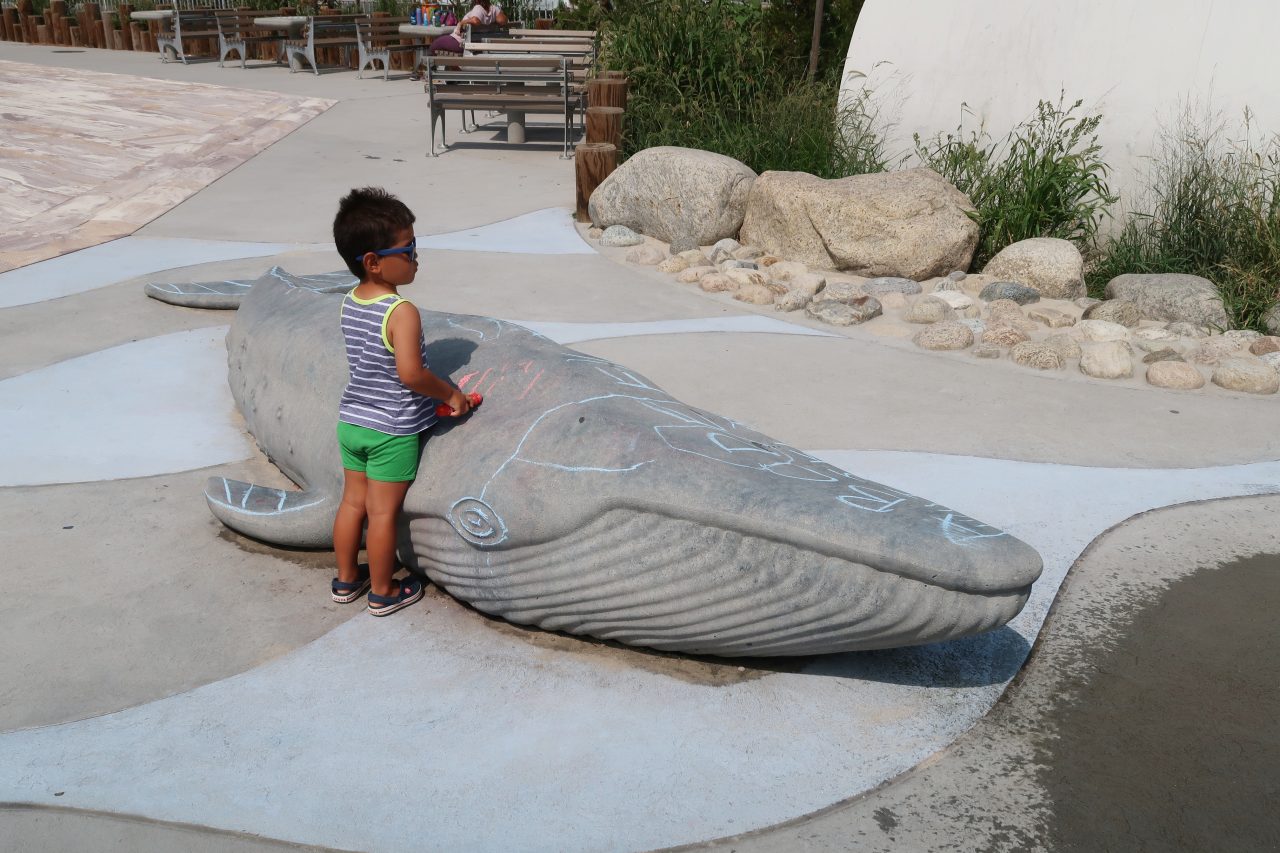
Public Response
The park opened on October 4th, 2019 to an appreciative audience of local school children. Subsequent visits have rewarded us with scenes of play and wonder in the tide pool on and alongside the whales. It is our hope that our design inspires the next generation to think of whales when they remember their time in Rockaway Beach.